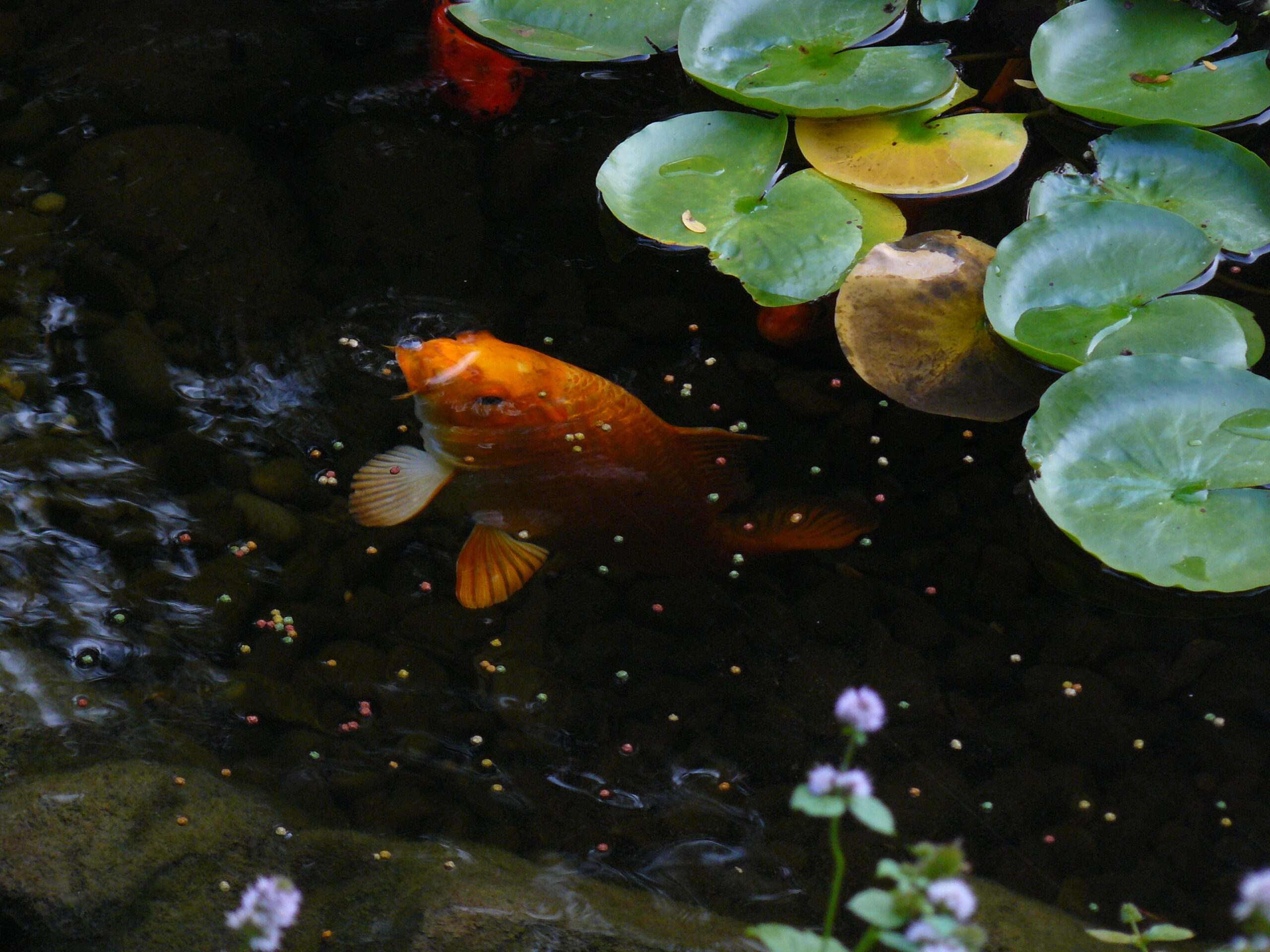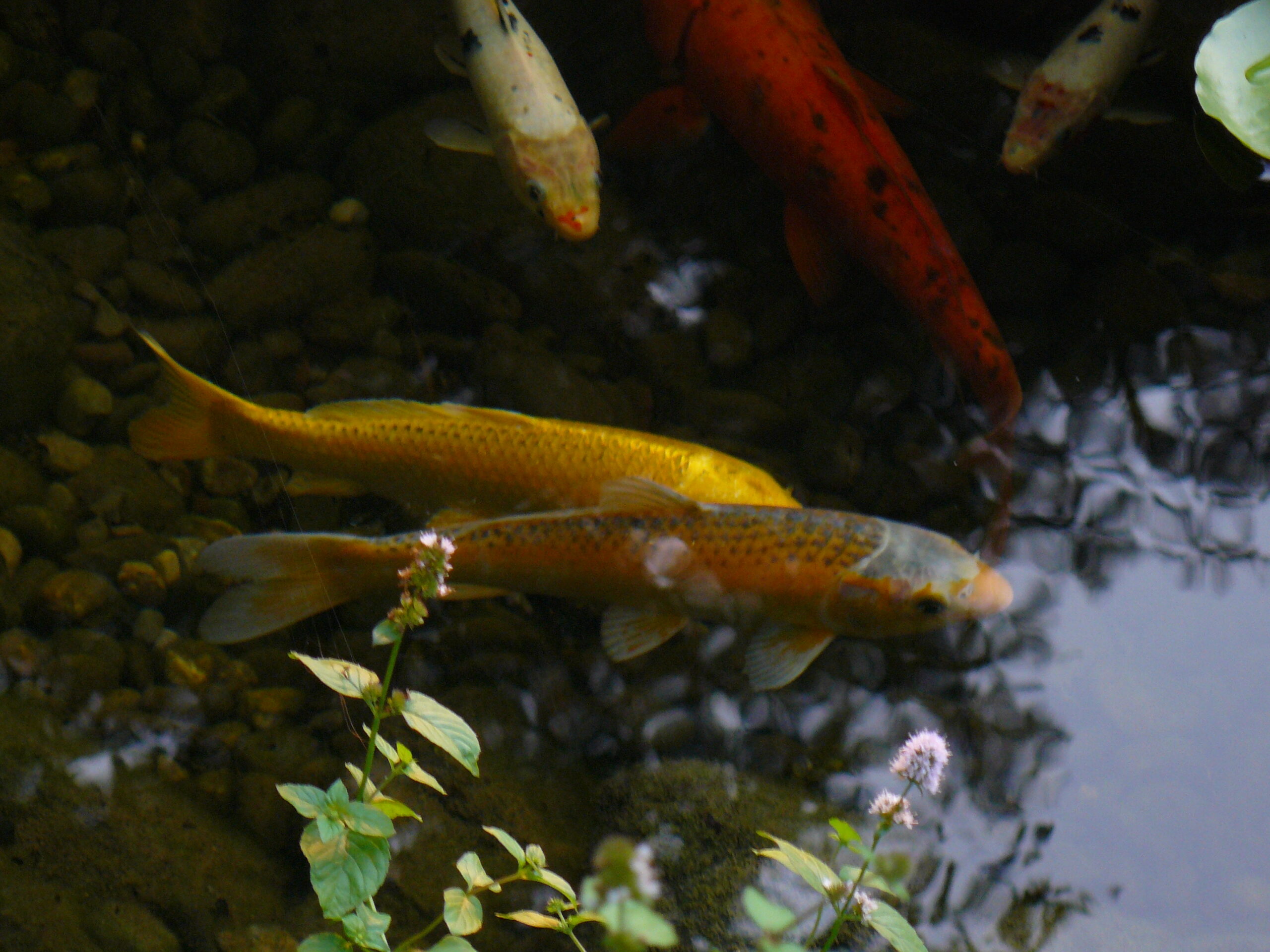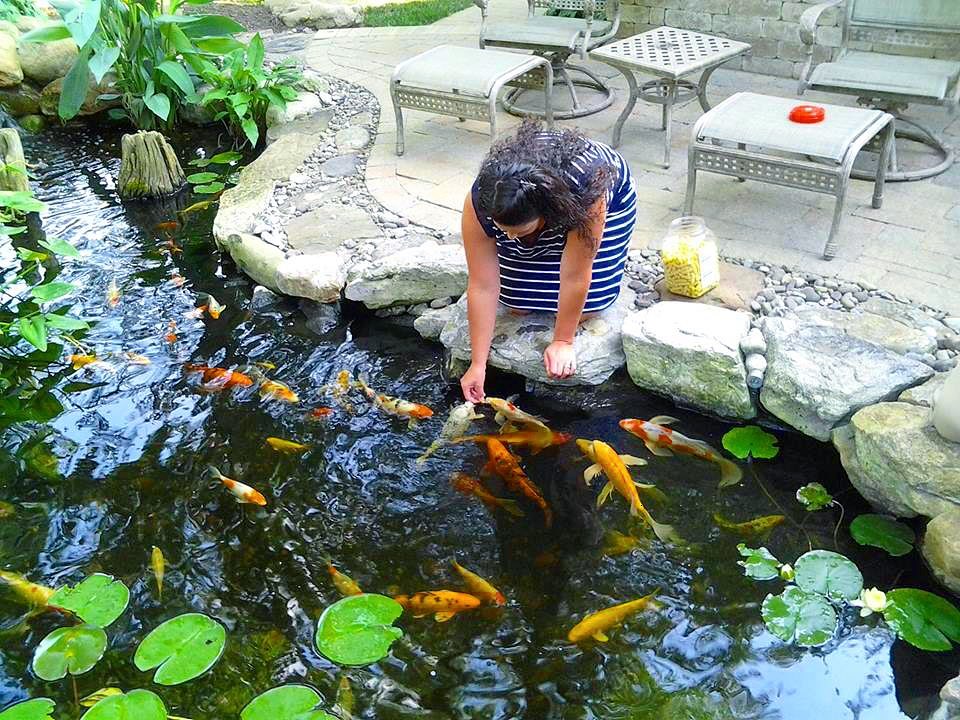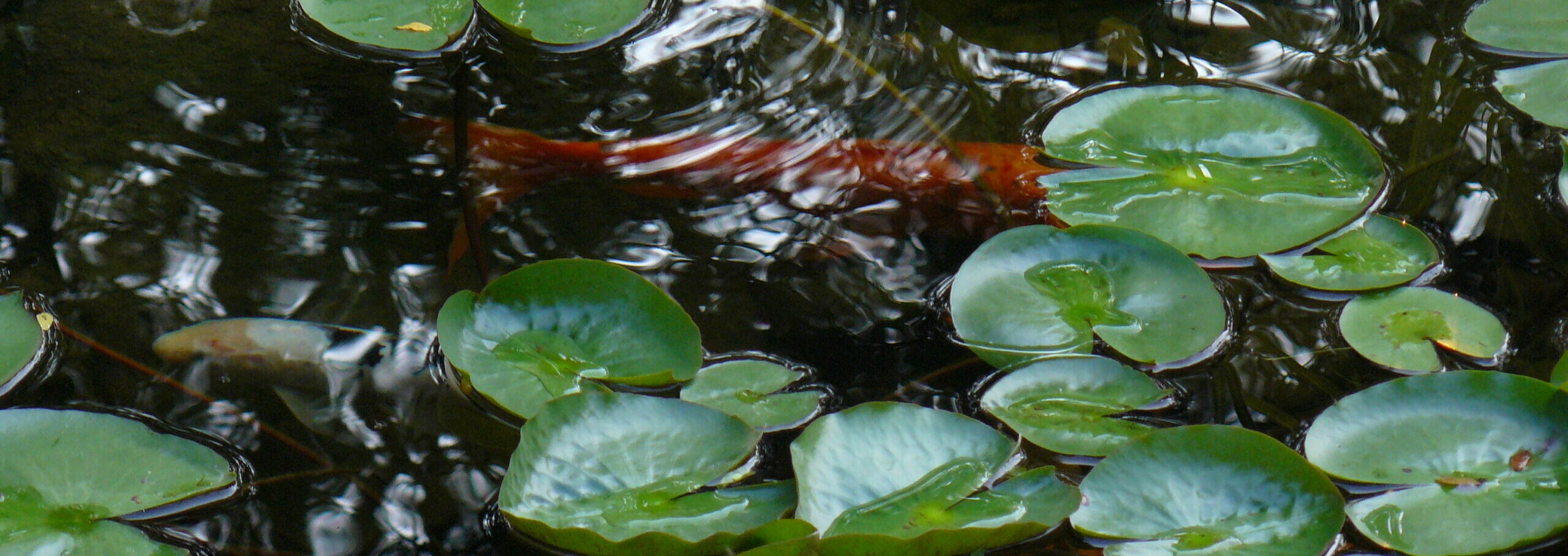Fish are one of the great joys of pond ownership. Whether koi, goldfish, shubunkin, or any other, the feeding process is arguably the most fun you can have with your fish. At feeding time, koi come up close so you can interact with them. They might even let you pet them! And if you’re patient, you can train them to eat out of your hand!

Because it’s so much fun, the most common feeding mistake that most people make is overfeeding their beloved finned friends. For the sake of your fish, it’s important to understand how, when, and what to feed them.
How Much Is Just Right?
Overfeeding can make your fish sick, and excessive amounts of fish waste strains the limits of what can be biologically reduced in the pond, resulting in a decline of water quality. Fish should be fed no more than three times per day. In cooler water (65-70 degrees F) they should only be fed once per day if that. In much warmer water (76-82 degrees F), three times per day is not crazy. However, you must be wary of bacterial blooms (cloudy water and low oxygen levels) if you feed heavy and there’s a lot of fish waste.
Fish should be fed for about five minutes per feeding. If they don’t come up and eat voraciously, they are telling you that they are too cold, too warm, or they’re simply not hungry. If this is the case, feed them lightly. If they are eating like crazy, you can sprinkle food on the water for five minutes if fish are present and eating. Avoiding feeding so much that there is an excess of food left to float into the skimmer or filter. As long as your fish are eating, you can keep sprinkling the food for up to five minutes.

What About Underfeeding Fish?
Let’s face it. Life can be busy and sometimes you might forget to feed your fish every day. This could impact very large fish in the summer when they could lose weight since their metabolism is working without enough calories for their big bodies. Underfeeding can also cause stunted growth in very small fish. Fish in ponds with natural forage and plant material will help themselves to nature’s bounty and are less dependent on their human owners for nourishment. That’s why it’s a good thing to have a bit of algae in the pond. You can dissuade koi from eating your favorite water lilies by making sure they’re fed every day in the summer.
If your fish are growing about one-half to one inch per month, you’re feeding enough. If not, they are either underfed, their pond home is too small, or the food is not adequate to support growth. Signs of underfeeding include heads that are wider than the bodies, slightly sunken eyes, a kink at the base of the tail, poor color, thinness, training white stools, and inactivity.
In the day-to-day experience of pond keeping, where you feed your fish can be significant. Unfortunately, many people feed the fish all at once near the skimmer. As a result, most of the food gets consumed by the skimmer instead of the fish. Your pond water can become polluted when food is left in the skimmer to decay, which isn’t good for your finned friends.
To keep your fish food from migrating to your skimmer, you can make a “feeding ring” out of two-inch PVC pipe and four elbows. This is simply a square ring of PVC with water secluded from inside, so it floats while retaining the food. The ring can be held in place with a string anchored under a rock. Your fish will learn to eat the food that’s floating in the ring.

Size of Food Matters
Small fish need small pellets that they can wholly engulf. If necessary, they will spend time chasing a big pellet, badgering it around the surface of the pond as it softens in the water, and eating off it like a giant peach. It’s better to give your smaller fish a small pellet that they can consume in one gulp.
Proper Food Storage
Ideally, you should only keep fish food for one season and dispose of any uneaten food. Always start a new pond season with fresh fish food. If you buy large quantities of fish food, refrigerate it – don’t freeze it. Freezing damages the fats in the food and the fat-soluble vitamins become compromised.
If food begins to smell funny, develops a fuzz on it, changes color, sticks together, or crumbles down, it’s “bad” and should be discarded. Feeding bad food to your fish can cause unnecessary problems. Bad food often contains aflatoxins, which can cause injury, deficiency, and broken backs in fish that eat it. It’s better for your fish to go hungry while waiting for fresh food, than it is for them to be fed spoiled food.
Not All Food Is Created Equal
As with most things in life, you typically get what you pay for, and it pays to feed quality food to your pond fish. Aquascape Premium Fish Food products are available in both pellet and flake form and are properly designed with the optimal health of your fish in mind.

